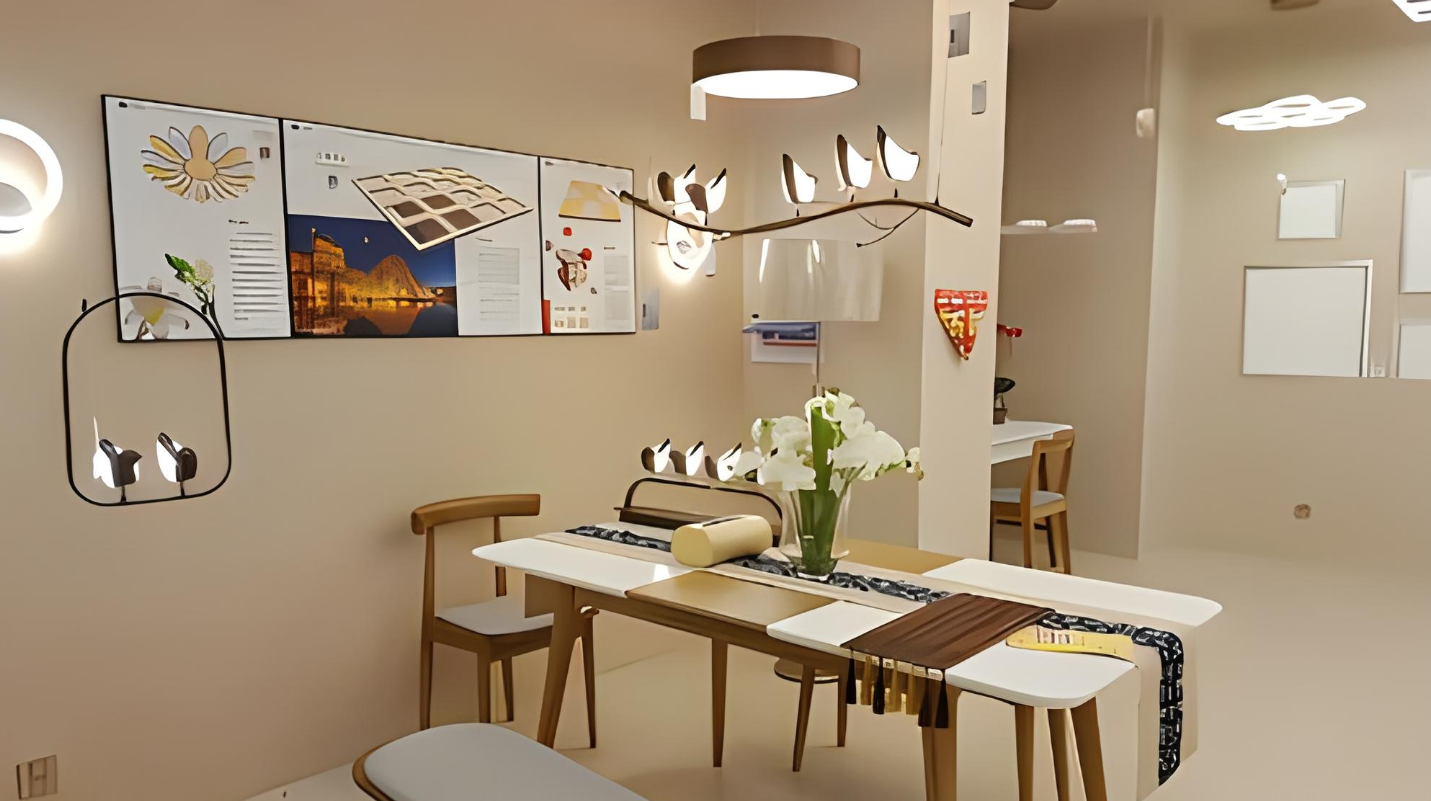Introduction
Having a well-designed dining room is essential for creating a welcoming and functional space in your home. The dining room is where friends and family gather to share meals and create memories, so it’s important to make sure it is a space that reflects your personal style and meets your needs. In this article, we will discuss various aspects of designing a dining room, including assessing the space, choosing the right furniture, lighting, adding color and texture, maximizing storage, creating a focal point, incorporating art and decor, choosing the right tableware and accessories, making the most of your space, and maintaining your dining room.
Assessing Your Dining Room: A Step-by-Step Guide
Before making any changes to your dining room, it’s important to assess the space and determine what changes need to be made. Start by measuring the dimensions of the room and taking note of any architectural features or obstacles that may affect the layout. Consider the flow of traffic in the room and how people will move around during meals. Assess the natural lighting in the room and determine if additional lighting will be needed. Finally, take note of any existing furniture or decor that you want to keep or incorporate into the new design.
Choosing the Right Furniture for Your Dining Room
When it comes to choosing furniture for your dining room, there are several factors to consider. First, determine how many people you need to accommodate on a regular basis and choose a table size accordingly. Consider the shape of the table – round tables are great for creating an intimate atmosphere, while rectangular tables are more versatile for larger gatherings. Next, choose chairs that are comfortable and complement the style of your table. If you have limited space, consider benches or stools that can be tucked away when not in use. Finally, think about additional furniture pieces such as a buffet or sideboard for storage and display.
Lighting Your Dining Room: Tips and Tricks
Proper lighting is crucial in a dining room to create the right ambiance and enhance the overall design. Start by considering the natural lighting in the room and how it can be maximized. If the room lacks natural light, consider adding a skylight or large windows to bring in more light. Next, choose a statement light fixture that will serve as the focal point of the room. This could be a chandelier, pendant lights, or a series of wall sconces. Finally, incorporate task lighting such as table lamps or wall-mounted lights to provide additional illumination for specific areas of the room.
Adding Color and Texture to Your Dining Room
Adding color and texture to your dining room can help create a warm and inviting atmosphere. Start by choosing a color scheme that reflects your personal style and complements the rest of your home. Consider using a neutral base color for the walls and furniture, and then add pops of color through accessories such as curtains, rugs, and artwork. Incorporate different textures through fabrics, such as velvet or linen, and materials such as wood or metal. Don’t be afraid to mix and match different textures to create visual interest and depth in the room.
Maximizing Storage in Your Dining Room
Storage is often overlooked in dining room design simiglighting, but it is essential for keeping the space organized and clutter-free. Start by assessing your storage needs – do you need space for table linens, serving dishes, or extra glassware? Consider incorporating built-in storage solutions such as cabinets or shelves to keep these items easily accessible but out of sight. If space is limited, consider using multifunctional furniture pieces such as benches with hidden storage or sideboards with built-in wine racks. Finally, make use of vertical space by hanging shelves or installing hooks for hanging pots, pans, or utensils.
Creating a Focal Point in Your Dining Room
Having a focal point in your dining room helps draw the eye and creates a sense of visual interest. Start by choosing a statement piece of furniture, such as a unique dining table or a bold chandelier, that will serve as the focal point. Arrange the rest of the furniture and decor around this piece to create a cohesive and balanced design. Consider adding artwork or a gallery wall to create a focal point on one of the walls. Finally, use lighting to highlight the focal point – for example, by installing spotlights or track lighting.
Incorporating Art and Decor into Your Dining Room
Art and decor play a crucial role in creating a well-designed dining room. Start by choosing artwork that reflects your personal style and complements the overall design of the room. Consider the size and scale of the artwork in relation to the walls and furniture. Hang artwork at eye level to create a focal point and make sure it is properly lit. In addition to artwork, consider incorporating other decor elements such as mirrors, plants, or decorative objects to add visual interest and personality to the space.
Choosing the Right Tableware and Accessories for Your Dining Room
Choosing the right tableware and accessories is important for creating a cohesive and stylish dining room design. Start by considering your personal style and the overall theme of your dining room. Choose tableware that complements the colors and textures in the room, whether it’s classic white china or colorful patterned plates. Consider investing in high-quality table linens such as tablecloths, napkins, and placemats to add elegance and sophistication to your dining table. Finally, choose accessories such as candle holders, vases, or decorative bowls that enhance the overall design and add personality to your dining room.
Making the Most of Your Dining Room Space
Making the most of your dining room space is essential, especially if you have limited square footage. Start by choosing furniture that is proportionate to the size of the room – avoid oversized pieces that will make the space feel cramped. Consider using multifunctional furniture such as extendable tables or benches with storage to maximize space. Use mirrors strategically to create the illusion of a larger space and reflect natural light. Finally, keep the room clutter-free by organizing and storing items properly, and avoid unnecessary furniture or decor that can make the space feel crowded.
Maintaining Your Dining Room: Cleaning and Organizational Tips
Maintaining your dining room is important for keeping it looking its best and ensuring it remains a functional space. Start by establishing a regular cleaning routine – dust surfaces, vacuum or sweep the floors, and wipe down furniture regularly. Clean spills and stains immediately to prevent them from setting in. Organize your storage spaces regularly to keep items easily accessible and prevent clutter from accumulating. Finally, consider using protective covers or placemats to prevent damage to your furniture and tableware.
Conclusion
Designing a well-functioning and stylish dining room is essential for creating a welcoming space in your home. By assessing your dining room, choosing the right furniture, lighting, adding color and texture, maximizing storage, creating a focal point, incorporating art and decor, choosing the right tableware and accessories, making the most of your space, and maintaining your dining room, you can create a space that reflects your personal style and meets your needs. Implement the tips and tricks provided in this article to create a dining room that you and your guests will love.
If you’re looking to add interest to your dining room without expanding your home office, check out this article on “How to Add Interest to Your Living Room Without Expanding the Home Office” from Art is Home Gallerie. It provides creative tips and ideas on how to transform your dining space into a stylish and functional area, while still maintaining a separate workspace. From incorporating unique lighting fixtures to utilizing versatile furniture pieces, this article offers practical solutions for maximizing the potential of your dining room.


